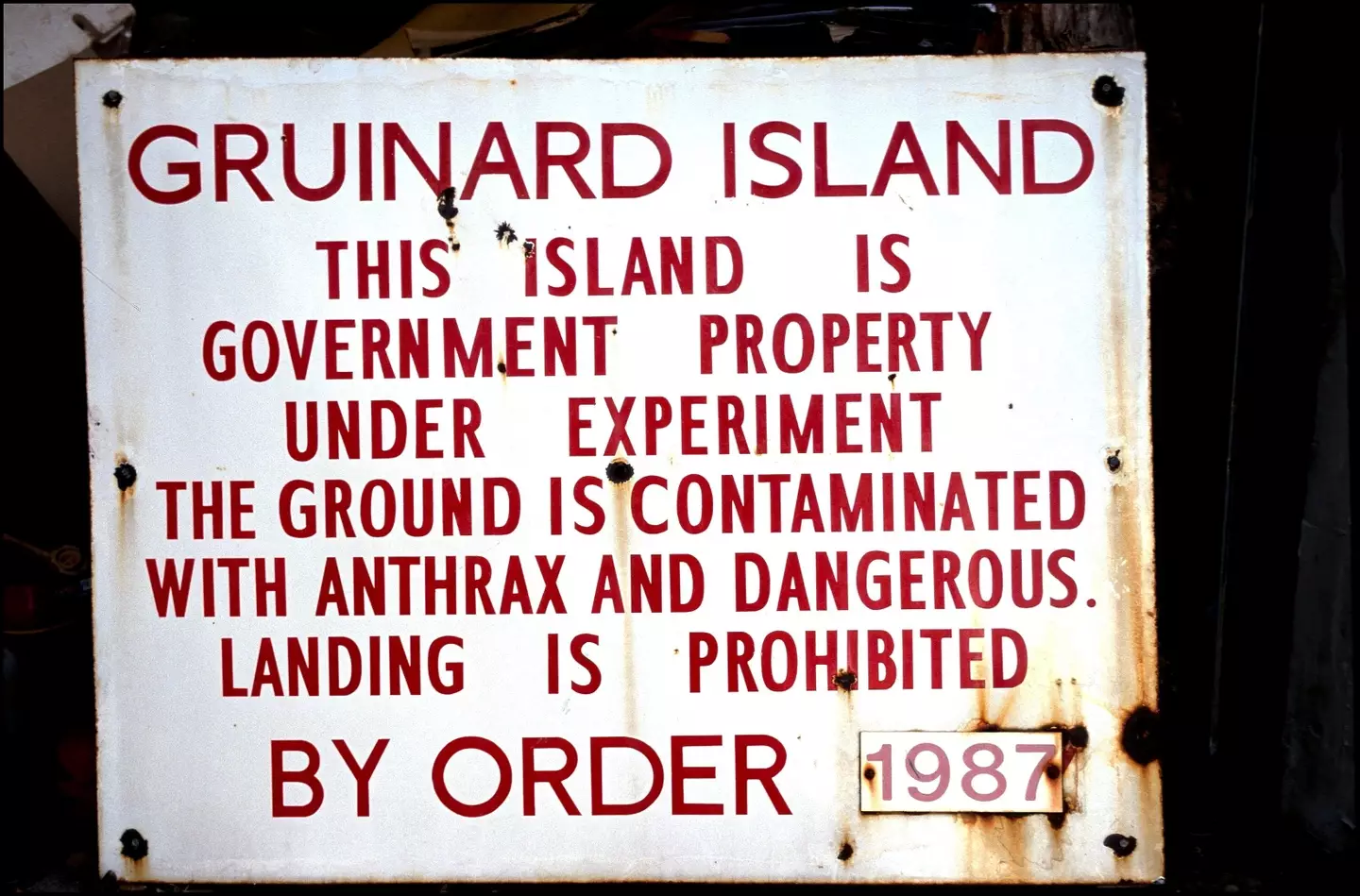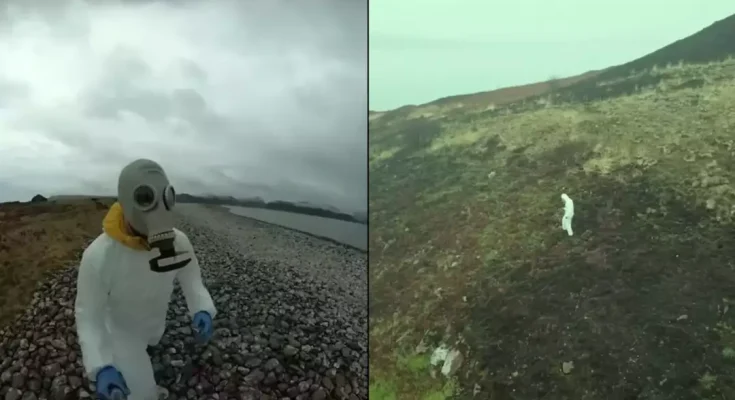It stems from a horror event during World War II
The ‘world’s deadliest island’ was banned from the public after a horror event over 80 years ago.
Scotland’s Gruinard Bay is home to a place named Gruinard Island, located between Gairlock and Ullapool, just off the northwestern coast of Britain.
The isle has been known for decades as ‘Anthrax Island’ following the events of World War II, as scientists used the area as a place to carry out experiments.
But what is anthrax, and why was it cut off from the rest of the world?
.jpg)
A man visited the island to see how dangerous it really was (YouTube/DaraTah)
A man made it his mission to visit the island, spending 24 hours on its shores as part of a YouTube video to see what it was really like.
Content creator Dara Tah made his way to Gruinard Island with his friend Matt James to test soil samples, with the goal of figuring out whether it was as toxic as people say.
But there are areas in the world where experiments took place over the mid-20th century, so there is the question over what makes this place so different.
To ensure maximum safety, the two visitors wore hazmat suits before hopping off a boat and making camp, with Tah explaining: “There seems to be absolutely nothing on the island, everything is just burnt.”
“I can’t see a single bit of wildlife. I’m only seeing skulls, there is no living wildlife here,” he noted.

Thee Ministry of Supply previously recognised the island as contaminated (Chip HIRES/Gamma-Rapho via Getty Images)
Following the second World War, the island was rendered deadly and uninhabitable, following a 1942 test that set of anthrax spore bombs – anthrax is a serious disease that is normally caused by Bacillus anthracis bacteria.
This type of bacteria is said to be rare and deadly, and mainly affects livestock and wild game, according to the Mayo Clinic.
It was so bad in fact, that in 1945, the Ministry of Supply recognised the island as contaminated, stating that it was too hazardous for humans to visit, thus prohibiting people from stepping on its shores for the foreseeable future.
Activist group ‘Dark Harvest Commandos’ were the ones that uncovered the secret experiments done on the island in 1981, when it became public knowledge that the soil was severely contaminated on the British isle.
But in 2022, a decontamination effort was put into place, where the island was burnt from ‘one end to the other’ in a vicious wildfire, aiming to kill all traces of anthrax.

A YouTuber and his friend spent 24 hours on the ‘deadly’ island (YouTube/DaraTah)
So that’s the main reason behind Tah’s visit, as the pair aimed to take soil samples on the island to see if the deadly anthrax spores were still present.
He aimed to find out what the ‘government were hiding’ following the fire.
They then explored the island, looking for different location to test for any presence of anthrax, eventually getting ten soil samples together, before sending them to a lab for further testing before staying in their tent, overnight.
While waiting to be picked up from the island, he confessed: “I was beginning to question whether coming to the island was too reckless.
“But thinking about what we’d learned so far it was clear someone needed to get answers and it might as well be me.”
One week later, their results were sent via email, and Tah opened them on a call with some friends, and read out their findings.
“Anthrax island is Anthrax free, Bacillus anthracis not found,” he read directly from a sample test report.
“That’s so weird I can’t believe it! It’s done, they burnt it all away.”
It is said that in 1990, the heirs of the original island purchased it from the British government for just £500.
After the controversial fire in 2022, a spokesperson on behalf of their estate told The Scotsman: “It hasn’t caused any damage. It has done good. The island was totally impenetrable and the sea eagles killed any wildlife there.
“In around two months, there will be green shoots. It will certainly have done the island a lot of good. It didn’t go out of control. It looked dramatic.”
Featured Image Credit: YouTube/DaraTah



